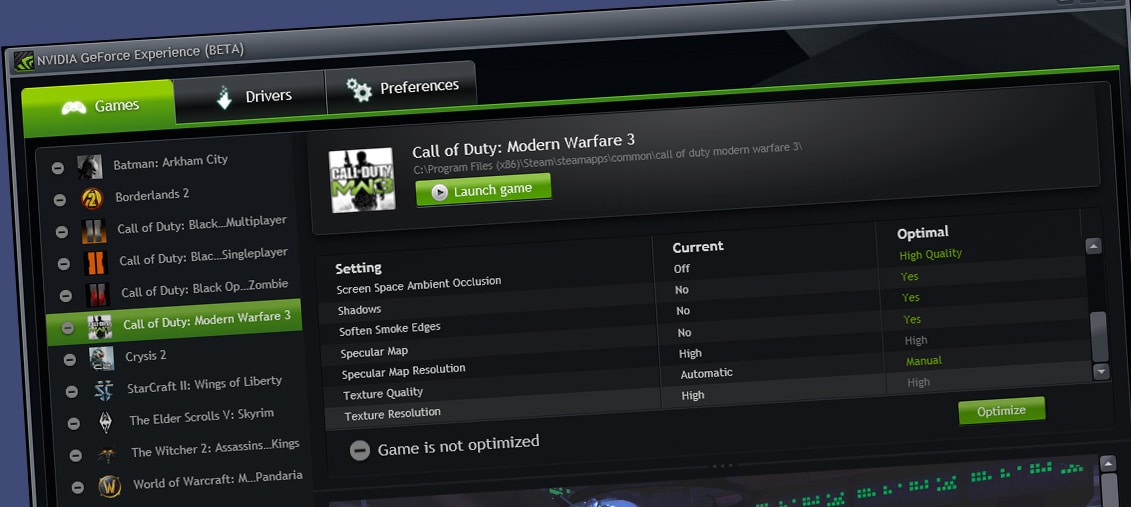That background processes can affect performance may not be news, but now data of the more tangible kind is circulating on Reddit and many other sites that it is possible to take home as much as 5-10 percent more frames per second by simply disabling Nvidia Streamer Service – even if the service is not used. The phenomenon mainly affects users with weaker processors, but also enthusiasts with lavish gaming systems report improvements.
Nvidia Streamer Service is used to stream PC games to Nvidia’s Shield devices and usually starts automatically, whether a Shield is connected or not. There is thus some justification for the concern that the service may steal processor and graphics performance unnecessarily.
Said and done, SweClockers starts the rigs for some quick tests and examines whether it is possible to note performance differences. When we are still running, we also take the opportunity to run a few rounds with and without the Geforce Experience control panel and the Shadowplay screen recording.
Settings
To examine the situation, one is used Geforce GTX 980 in SweClocker’s standard test system for graphics card reviews. Exact specifications, quality settings and more can be found in the review of the Nvidia Geforce GTX Titan X.
Standard: Normal installation med Geforce Experience
Without GFE: Drivers only (without Geforce Experience)
Without service: Nvidia Streamer Service and Shadowplay manually disabled (according to Reddit tip)
Passive SP: Shadowplay activated in passive mode, which requires manual start of the recording function. Thus, no screen recording is in progress.
Active SP: Shadowplay activated in standard mode, where the last five minutes are recorded continuously.
Test results: 1,920 × 1,080 pixels
Standard | Without GFE | Without service | Passive SP | Active SP | |
|---|---|---|---|---|---|
Tomb Raider | 111/90 fps | 111/90 fps | 111/90 fps | 111/90 fps | 107/88 fps |
Hitman: Absolution | 55/46 fps | 55/46 fps | 55/46 fps | 55/46 fps | 52/44 fps |
Sleeping Dogs | 81/46 fps | 81/46 fps | 81/46 fps | 81/46 fps | 78/44 fps |
Bioshock Infinite | 128/110 fps | 128/110 fps | 128/110 fps | 128/110 fps | 120/102 fps |
Battlefield 4 | 90/74 fps | 90/74 fps | 90/74 fps | 90/74 fps | 87/73 fps |
When the first test rounds are completed, it appears that all settings give the same result. The only exception is when Shadowplay is active and records the screen image, which of course takes up some performance. This also means that several titles with Bioshock Infinite in the lead are perceived as more jerky than normal.
Test results: 2,560 × 1,440 pixels
Standard | Without GFE | Without service | Passive SP | Active SP | |
|---|---|---|---|---|---|
Tomb Raider | 67/56 fps | 67/56 fps | 67/56 fps | 67/56 fps | 65/54 fps |
Hitman: Absolution | 35/29 fps | 35/29 fps | 35/29 fps | 35/29 fps | 34/28 fps |
Sleeping Dogs | 48/27 fps | 48/27 fps | 48/27 fps | 48/27 fps | 46/26 fps |
Bioshock Infinite | 84/72 fps | 84/72 fps | 84/72 fps | 84/72 fps | 80/66 fps |
Battlefield 4 | 58/48 fps | 58/48 fps | 58/48 fps | 58/48 fps | 56/46 fps |
When the resolution is increased, of course, the frame rates drop, but here too it is not possible to detect any measurable differences with the Nvidia Streamer Service. The fact that screen capture via Shadowplay gives lower results is explained, among other things, by the fact that the function uses the graphics card to compress the video stream. It is enough to turn off the recording for the frame rate to return to normal.
Summary
The conclusion is that the editorial staff can not note any universal benefits of following the tips circulating online and manually disabling Nvidia’s system services. The Geforce Experience control panel also does not affect the frame rate when the program is run in the background, and it is not possible to point out any subjective differences in the gaming experience.
That said, these numbers only apply to SweClocker’s relatively powerful test systems. A weaker processor, varying settings, possible bugs or other versions of the drivers may well affect the results. Many users obviously notice a difference and it should not be dismissed as a mass psychosis in the first place.
For those who want to be on the safe side, the old rule applies to turn off or disable redundant applications in the background to squeeze out the best possible frame rate. We at SweClockers do the same for all performance tests.















